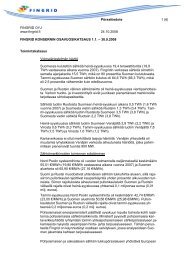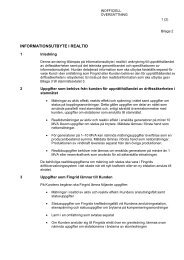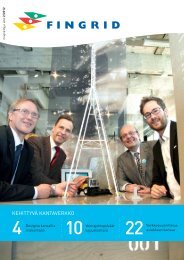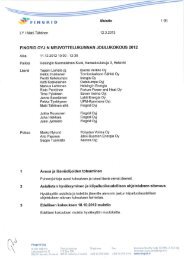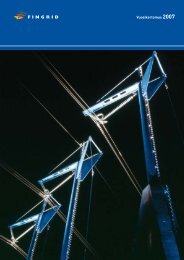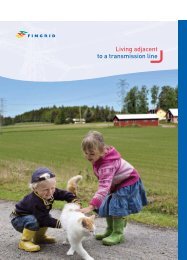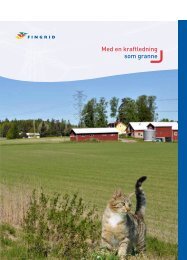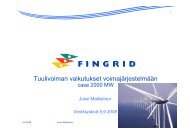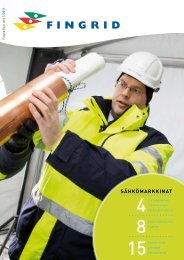2/2012 - Fingrid
2/2012 - Fingrid
2/2012 - Fingrid
You also want an ePaper? Increase the reach of your titles
YUMPU automatically turns print PDFs into web optimized ePapers that Google loves.
Design and technologyhand in handThe first idea of the field tower came about – naturally – in the field.have spent a lot of time in the countryside sincechildhood; my first job was working on the pota-“I to field. My present home is also in the country, inKirkkonummi, next to a transmission line. I have been lookingat the towers for a length of time and thinking whetheror not something could be done to them,” says Muotohiomo’sManaging Director Pekka Toivanen. The tower designproject that lasted a couple of years ended up well. “A successfuloutcome and a satisfied customer are the best thankswe can get. Fennia Prize is a great bonus on top of it all;these things are a rare treat for any designer.””Fennia Prize is a great recognition of persistent work,”said <strong>Fingrid</strong>’s Executive Vice President Kari Kuusela incommenting on the prize. “In this project, we have managedto combine design and technology in a successful manner.The way I see it, this recognition is above all a testament tothat.”Despite the strong presence of design, the planning of thefield tower has been based on the practical aspects. The goalwas to achieve a tower that not only adapts to the landscapebut one that is also as safe and functional as possible. “Thekey objective for us was to accomplish a new tower thatneeds no guys. A tower with no guys not only facilitatescultivation but also adds to safety when moving on fields,”Kari Kuusela says.The field tower to be taken into use in 2013 has passed exactingstrength and safety tests. Kari Kuusela estimates that10 to 20 field towers will be erected on <strong>Fingrid</strong>’s transmissionlines annually.The price of a single field tower is about 60,000 euros,which is roughly twice as high as that of a conventionaltower. “However, if we look at the total costs, the differenceis small, because on average the towers only accountfor about 2 per cent of all the costs of a transmission line.We will use the field towers only where they are necessary,in other words primarily on arable field areas. The parts oftransmission lines traversing forests continue to have conventionaltowers.” FINGRID 2/<strong>2012</strong> | 7



